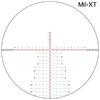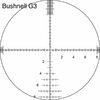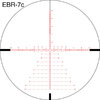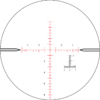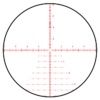Most likely 800-1000+, bench or prone bipod shooting on stationary targets and not on the clock. But I do want to learn about options for PRS as well.
distance has almost nothing to do with spec'ing out a scope, which is why it's so annoying that so many people create threads in this forum that start with "what scope for x distance?"
here's basically what drives choices
tube size, objective size - size and weight. if you are humping the rifle up mountains, the lighter the better. otherwise, larger means more light, more travel for the adjustments, etc.
adj obj parallax vs side focus parallax - obj is better but not as ergonomic as side focus
magnification range - imho
1x is for when hundredths of a second count, and you've got a daylight bright dot and very large close targets
2-3x helps when target is obscured or lighting conditions suck (target in shade for example) or PID is needed at short range
4-8x is great for shooting large targets really fast out to mid range
10-20x is best for a mix of speed, situational awareness, and 1moa or larger targets and moving targets
20-25x is best for sniping small targets. like, real one shot precision shooting of a single stationary target.
25-40x is great for very small targets at mid range. past midrange, your trace will be out the top of your FOV so you'll need a spotter or people in the pits pulling targets
depth of field - almost nobody talks about this but it's tremendously important for some types of shooting. sometimes it's very handy, being able to have a sharp image from 300-600 yards so you can catch trace and see your target. other times, it's handy to be able to look at mirage at a particular distance
other misc considerations
- some illuminated reticles only light the center and others light the entire reticle, meaning your tree may not be visible if it's not illum
- USO to my knowledge is the only one that offers an internal bubble level, which is a dang handy feature
- NF, despite their many pros, has one huge con, which is the entire ocular housing turns when you change magnification. that makes everything from lens covers to video capture a giant PITA
- some scopes are made to have a cat tail or lever for quick changing magnification. others can be damaged by this.
Excellent input thank you. So when you say you dial are you dialing just elevation and holding for windage, or do you dial for wind mid stage as well?
i've probably dialed for wind ten times in the past ten years. i've ordered a number of scopes with capped windage. i usually don't even zero the knob, and just cover it.




